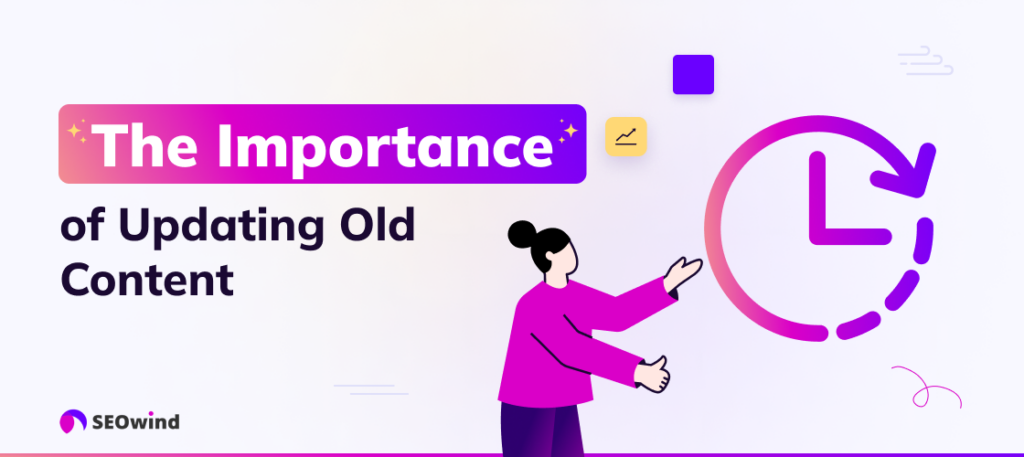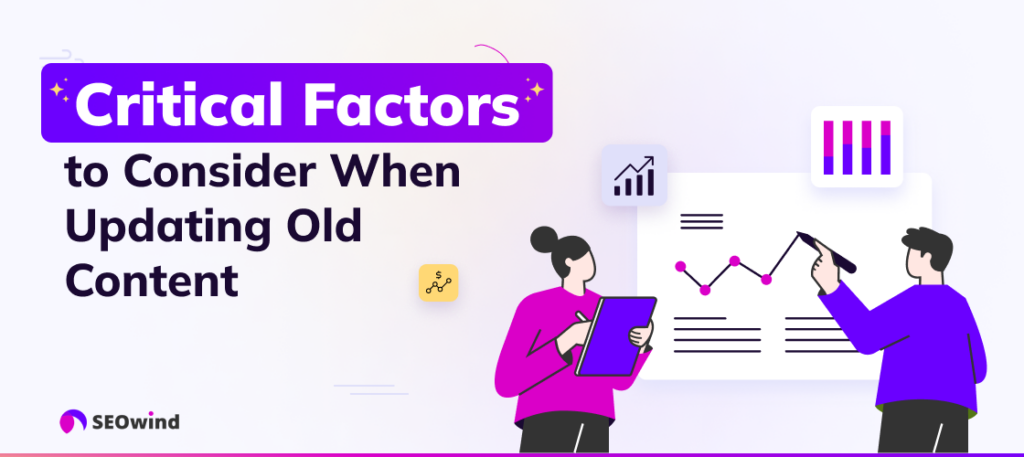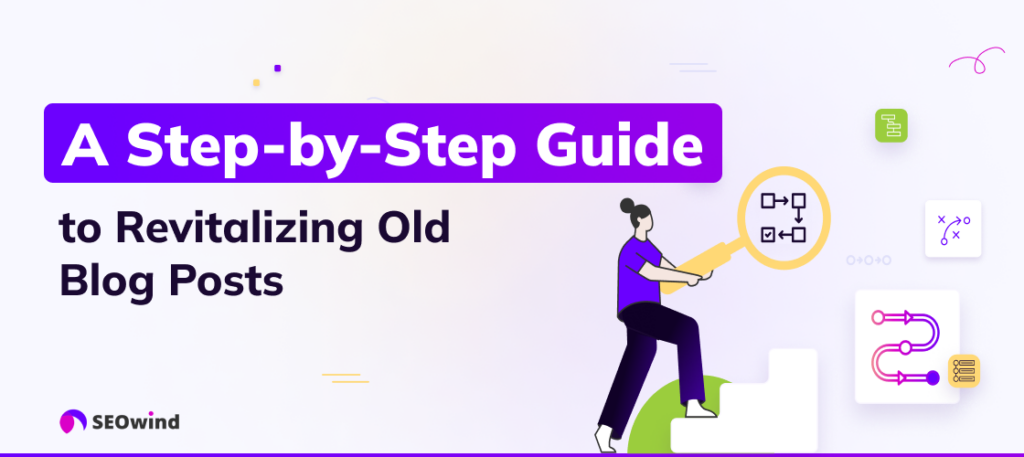Content marketers constantly wrestle with a key question: should they focus on creating fresh articles or optimize existing content? Both strategies have their strengths, and knowing when to use each approach can dramatically boost your SEO performance and audience engagement.
The Strategic Value of Content Refreshes vs. New Creation
When planning your content calendar, don’t just flip a coin between updating old content and creating new pieces. Recent research shows this decision can significantly impact your results.
The Data Behind Content Refresh ROI
Many marketers overlook the measurable returns that content updates deliver. According to a Semrush study, 53% of marketers saw better engagement when they updated their existing content, showing a clear ROI advantage compared to just producing new material. This improvement comes from several factors:
- Keeping content relevant in fast-changing industries
- Meeting shifting search intent and user needs
- Building on existing authority and backlinks
- Capturing new related keywords without diluting your topic focus
Even more telling, HubSpot reports that 83% of marketers found that creating higher-quality content less often worked better than pumping out lower-quality content more frequently. This strongly backs a strategy of thoughtful content refreshes rather than constantly chasing new production.
When Fresh Content Delivers Better Results
While updates pack a punch, there are clear situations where creating new content remains essential. Sixth City Marketing states that 55% of marketers saw improved search rankings when consistently publishing new material. Fresh content allows you to:
- Target emerging keywords and topics
- Reach new audience segments
- Fill gaps in your content strategy
- Build authority in unexplored areas
The Importance of Updating Old Content

Content refreshes aren’t just about minor tweaks. They’re about making the most of your existing assets to maximize your content investment.
Why Refreshing Content Is Essential for SEO Success
Search engines love content that demonstrates expertise, authority, and trustworthiness. Updating existing content reinforces these qualities by:
- Improving relevance with current information
- Enhancing keywords as search trends evolve
- Increasing how often search engines crawl your site
- Strengthening user signals with improved engagement metrics
Research backs this approach: moving a page from position 2 to position 1 in search results typically boosts organic traffic by 50%. Even small improvements, like moving from position 7 to 6, can increase traffic by about 20%. Content refreshes often offer the quickest path to these gains.
How Updated Content Maintains User Engagement and Trust
Beyond search benefits, content updates directly affect how users see and interact with your brand. Fresh, accurate information:
- Shows your commitment to providing current, valuable resources
- Builds credibility as users find consistently updated information
- Increases time-on-page and reduces bounce rates
- Creates opportunities to promote content to your audience again
According to HubSpot, organizing your content into topic clusters and focusing on answering your audience’s questions can significantly boost your site’s SEO performance and conversion rates.
Critical Factors to Consider When Updating Old Content

Not all content deserves an update. To get the most from your efforts, consider these factors when evaluating existing articles.
Before refreshing content, analyze how it’s currently performing to determine its potential:
Position-Based Assessment Framework
Tom Winter, founder of SEOwind, suggests: “Focus your content update efforts on pages ranking in positions 4-20, on the first and second page of search results. These ‘striking distance’ pages are already somewhat relevant to Google, making them prime candidates for improvement. Pages ranking in positions 1-3 typically just need minor updates to maintain their performance.”
For pages outside the top 20 positions, think about whether the core topic still fits your strategy before investing in extensive updates. Sometimes, these pages might need complete rewrites or merging with stronger content.
Traffic Patterns and User Engagement
Look at traffic trends over time. Pages that once performed well but now show declining or flat traffic often benefit most from updates. Watch for:
- Decreasing organic search traffic
- Shorter average session duration
- Rising bounce rates
- Declining conversion rates
These metrics often signal that content has become outdated or less relevant to what users need today.
Information Accuracy and Industry Relevance
Content accuracy directly impacts your credibility. Prioritize updates for:
- Statistics or data points older than 1-2 years
- Recommendations or best practices that have changed
- Product information or features that have been updated
- References to outdated tools or resources
In fast-changing fields like tech, finance, or healthcare, information can become obsolete within months. Set up regular review cycles for time-sensitive content to keep it accurate.
Content Depth and Competitive Positioning
Search algorithms increasingly favor comprehensive coverage of topics. When evaluating content for updates, consider:
- How your content length and depth compare to competitors
- Missing subtopics or questions users might have
- Opportunities to add new research or case studies
- Potential for better visuals or interactive elements
By addressing these factors, your updated content can jump ahead of competitors and better serve what your audience needs.
Backlink Opportunities and Resource Allocation
Content with existing backlink profiles deserves special attention:
- Pages with quality backlinks already have established authority
- Updating high-authority pages often yields faster results than creating new content
- Refreshed content can be reshared with sites that previously linked to it
- Historical social shares show the content resonated with audiences
From a resource perspective, updating existing content typically takes less time and money than creating entirely new pieces, allowing for more efficient use of your content marketing budget.
A Step-by-Step Guide to Revitalizing Old Blog Posts

When you’ve identified content worth updating, follow this systematic approach to get the best results.
1. Conduct Comprehensive Keyword Research for Updates
Start by reassessing the keyword landscape around your topic:
- Review the current search volume and competition for your target keywords
- Identify new related terms and questions that have emerged since publication
- See which keywords your competitors now rank for with similar content
- Look for shifts in user intent that may have occurred
This research ensures your updated content aligns with how people currently search for information on your topic.
2. Rewrite Headlines, Meta Tags, and Update Visuals
First impressions matter for both readers and search engines:
- Craft a compelling headline that naturally includes your primary keyword
- Update your meta description to improve click-through rates from search results
- Replace outdated images with current, high-quality visuals that reinforce key points
- Consider adding new media formats like infographics, videos, or interactive elements
Visual refreshes signal to returning visitors that the content contains new information worth checking out.
3. Expand and Deepen Content Coverage
Content comprehensiveness strongly correlates with search performance:
- Add new sections addressing questions that have emerged since the publication
- Include recent developments, research findings, or industry changes
- Provide additional examples or case studies that reinforce your points
- Consider creating comparison tables, decision frameworks, or step-by-step processes
Take Mailbutler, an email productivity platform, as an example. They implemented a targeted content refresh program focused on strategic enhancements. As documented by Content Harmony, their approach included updating meta descriptions, optimizing meta titles, adding FAQ schema, and improving internal linking within existing blog posts. This led to 1,300 additional clicks and tens of thousands of new impressions in just three months after the refresh.
4. Update Outdated Information
Accuracy builds trust with both readers and search engines:
- Verify all statistics and update with current data
- Replace outdated tools or resources with current alternatives
- Update recommendations to reflect current industry best practices
- Remove references to discontinued products or deprecated features
This careful attention to accuracy boosts your content’s E-E-A-T (Experience, Expertise, Authoritativeness, and Trustworthiness) signals.
5. Improve Internal and External Links
Link maintenance is a critical yet often overlooked aspect of content updates:
- Check all external links to ensure they still work and remain relevant
- Add links to newer content on your site that relates to the topic
- Remove links to outdated resources or pages that no longer exist
- Consider adding links to authoritative sources that published relevant research since your original post
Strong internal linking helps distribute authority throughout your site while making navigation easier for users.
6. Optimize for Readability and Engagement
Modern content consumption habits demand easily scannable content:
- Break up long paragraphs into shorter, more digestible chunks
- Add descriptive subheadings that incorporate secondary keywords
- Use bullet points and numbered lists for complex information
- Include white space to improve readability on mobile devices
These improvements help readers quickly find the information they need, increasing satisfaction and time on the page.
7. Add Conversion Opportunities
Updated content provides new opportunities to guide readers toward desired actions:
- Review and update calls-to-action to align with current offers
- Consider adding content upgrades specific to the topic
- Include relevant testimonials or social proof elements
- Test different CTA placements to optimize conversion rates
VideoAmp, a software and data startup, offers a great example here. They faced stagnation in attracting marketing-qualified leads due to an outdated brand story. After a comprehensive content refresh that included UX optimization and updated core messaging, VideoAmp saw an 850% increase in MQLs in just one month, showing the powerful impact of aligning refreshed content with audience needs and brand positioning.
8. Preserve URL Structure When Possible
Maintain the SEO value you’ve built over time:
- Keep the original URL unless the content direction has completely changed
- If you must change the URL, set up proper 301 redirects
- Update canonical tags if needed
- Let Google know about the update through Search Console
This approach preserves existing backlinks and historical SEO equity.
9. Republish With Updated Timestamp
Signal freshness to both users and search engines:
- Update the publication date to reflect when significant changes were made
- Consider adding an “Originally published on [date]” note for transparency
- Promote the refreshed content through your distribution channels
- Reach out to sites that previously linked to your content to share the updated version
When to Prioritize Creating New Content
While updates deliver strong ROI, certain situations clearly call for fresh content creation.
Deciding When to Innovate with New Topics
Create new content when:
- Targeting keywords with no current coverage on your site
- Addressing emerging industry trends or developments
- Expanding into new topic areas relevant to your audience
- Supporting new products, services, or business initiatives
- Building authority in previously unexplored niches
The new content allows you to expand your topical authority and capture search traffic for previously untargeted keywords.
Meeting Audience Demand for Fresh Perspectives
Your audience’s evolving needs should guide content creation decisions:
- Monitor social media conversations to spot emerging questions
- Review customer support inquiries for common pain points
- Analyze search trends to detect shifting interests
- Survey your audience directly about content gaps
- Study competitor content to identify overlooked opportunities
By systematically addressing these information needs, you show responsiveness to your audience while expanding your content footprint.
Data-Driven Decision Framework: Update or Create New?
Instead of guessing, use this practical framework to determine which strategy fits each situation.
Position-Based Decision Matrix
| Current Position | Recommendation | Rationale |
|---|---|---|
| Positions 1-3 | Minor updates | Defend top rankings with fresh information |
| Positions 4-20 | Major update | “Striking distance” content with high potential |
| Positions 21-50 | Evaluate ROI | Assess traffic potential before major investment |
| Not ranking | New content | Fresh approach needed for unaddressed topics |
Traffic-Based Assessment
| Traffic Pattern | Recommendation | Approach |
|---|---|---|
| High & stable | Regular updates | Maintain performance with fresh data |
| Once high, now declining | Priority update | Identify gaps compared to new ranking content |
| Never performed | Evaluate intent | Check if topic still relevant; consider new content |
| Seasonal fluctuations | Pre-season updates | Refresh before peak search periods |
Resource Allocation Model
Kate Kandefer, Co-Founder of SEOwind, suggests: “One effective approach is the 70/30 rule: allocate 70% of your content budget for new creation and 30% for strategic updates. This balance ensures continued expansion while protecting existing assets.”
If you’re running a smaller content operation, consider starting with a 50/50 split until you identify which approach works better for your specific audience and industry.
Best Practices for a Balanced Content Strategy
Success comes from integrating both approaches into a cohesive strategy.
Content Auditing and Performance Analysis
Implement regular content audits to guide your decision-making:
- Conduct quarterly performance reviews of all content assets
- Categorize content as “update,” “leave as is,” or “remove/redirect”
- Prioritize updates based on traffic potential and conversion value
- Look for content clusters that could benefit from comprehensive updates
- Identify seasonal content requiring pre-peak season refreshes
Tools like Google Search Console provide valuable position tracking and performance data to identify update opportunities.
Technical SEO Considerations for Updated Content
Content updates require attention to these technical details:
- Properly manage URL structures and implement redirects when needed
- Use canonical tags appropriately when consolidating similar content
- Update XML sitemaps to reflect content changes
- Consider using schema markup to highlight updated content dates
- Monitor crawl stats after updates to ensure proper indexing
Google’s Search Quality Rating Guidelines suggests that a document with a large portion of its content updated over time might be scored differently than one with minimal updates, highlighting the importance of substantial rather than superficial refreshes.
Balancing AI Tools and Human Judgment in Content Updates
As AI content tools get more sophisticated, finding the right balance between automation and human expertise is crucial for effective content updates.
How AI Complements (Not Replaces) Human Expertise
As Tom Winter says “AI tools are excellent at identifying patterns and opportunities at scale, but human judgment remains essential for understanding nuance, brand voice, and strategic context. The most successful content teams use AI to augment their capabilities rather than replacing critical thinking”.
The ideal approach combines:
- AI-powered content analysis to spot update opportunities across large content libraries
- Data-driven insights to prioritize which content pieces deserve attention
- Automated checks for technical issues like broken links or outdated statistics
- Human expertise for strategic decisions, creative solutions, and quality assurance
In my experience, the companies getting the best results with content updates use AI to handle repetitive tasks while keeping humans in charge of strategy, storytelling, and subject matter expertise – elements that build genuine connection with audiences.
How to write new content with SEOwind

Creating fresh, engaging content that resonates with your audience and performs well in search engines can be challenging. However, with SEOwind, the process becomes much more streamlined and efficient.
Do the content research with SEO Missions
The first step in creating new content with SEOwind is to conduct thorough research using SEO Missions. This feature allows you to gather valuable insights about your target keywords, competitor content, and audience preferences. By analyzing this data, you can identify gaps in existing content and opportunities to create something truly unique and valuable.
Type Your Focus Keyword (or Phrase) to create the Brief
Once you’ve completed your research, it’s time to create a content brief. Simply enter your focus keyword or phrase into SEOwind, and the tool will generate a comprehensive summary based on the data it has collected. This brief serves as a roadmap for your content, ensuring you cover all the essential topics and meet search engine requirements.
Create an AI outline based on data
With your brief in hand, SEOwind’s AI can generate a detailed outline for your content. This outline is data-driven, incorporating insights from top-performing content in your niche.
Adjust Settings
Before creating content, take a moment to fine-tune your settings. SEOwind allows you to customize various aspects of your content, such as tone of voice, target audience, and content length. These adjustments help align the generated content with your brand’s style and readers’ expectations.
Add your insights and expertise
While SEOwind’s AI is powerful, your unique insights and expertise are invaluable. Use this step to add your personal touch to the content. Share anecdotes, industry-specific knowledge, or unique perspectives that only you can provide. This human element helps to create more authentic and engaging content that resonates with your audience.
Switch on SEOwind AI Agents to make the content E-E-A-T
To boost your content’s credibility and authority, activate SEOwind’s E-E-A-T features. These include:
- AI Research Agent – enhances your article with relevant statistics, expert insights, case studies, emerging trends, and even data from your own website. This feature ensures your content is backed by high-quality, authoritative information, making it more engaging and credible.
- AI Eval & Refine Agent – improves your AI-generated article based on analysis, data enrichment, and refinement. This feature rewrites and fine-tunes your content for better clarity, authority, and SEO minimizing editing on your end.
- Internal linking: Automatically suggest relevant internal links to strengthen your site’s structure.
- Adding stats and quotes: Incorporate data-driven statistics and expert quotes to support your points.
These AI Agents and Workflows help demonstrate your content’s expertise, authoritativeness, and trustworthiness to readers and search engines.
Click “Generate”
With all the pieces in place, it’s time to let SEOwind work its magic. Click the “Generate” button, and watch as the AI crafts a well-structured, informative article based on your input and settings. The result is a high-quality piece of content that combines the best of AI efficiency and human creativity.
Review and publish
The final step is to review the generated content. While SEOwind produces excellent drafts, it’s crucial to give your content a human touch. You can do it in our AI editor. Read through the article and make any necessary edits or additions to ensure it meets your standards and aligns with your brand voice. Once you’re satisfied, publish your new, SEO-optimized content and share it with your audience.
By following these steps, you can leverage SEOwind’s powerful features to create compelling, SEO-friendly content that drives traffic and engages your readers. This process combines the efficiency of AI with your unique expertise, resulting in content that truly stands out in the digital landscape.
How to Update Old Content with SEOwind

SEOwind’s Content Update feature offers a specialized solution that combines AI analysis with tools for preserving brand voice:
- Smart Setup with Brand and SERP Awareness: The system analyzes your existing content alongside top-ranking competitors to ensure updates maintain brand voice while meeting search expectations.
- Content Update Agent: This feature identifies what to keep, remove, or rewrite based on search intent and user value, then integrates updated insights and statistics.
- Evaluation and Refinement Agent: The system polishes the updated content, improving structure and clarity while maintaining your unique voice.
- AI-Powered Internal Linking: By connecting with Google Search Console, the tool can suggest relevant internal links to strengthen your site structure.
- E-E-A-T Scoring: After updates, you receive a before-and-after breakdown showing how content authority improved, with recommendations for further enhancements.
The key to success with any of these tools is establishing clear update criteria and maintaining editorial oversight of the final output. Even the best AI tools need human guardrails – a clear strategy, strong brand guidelines, and subject matter expertise that ensures accuracy and relevance.



